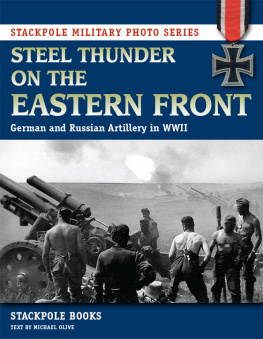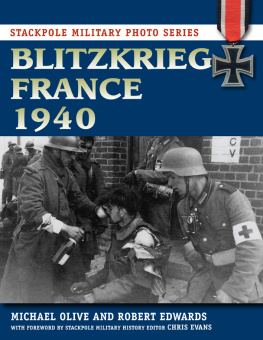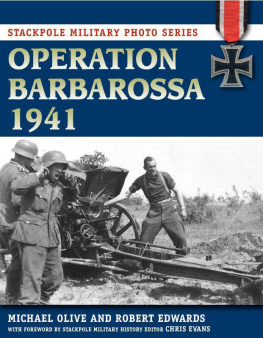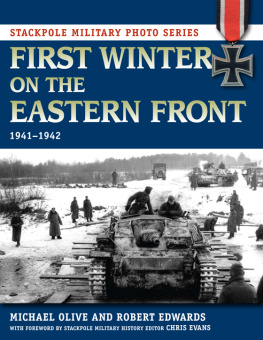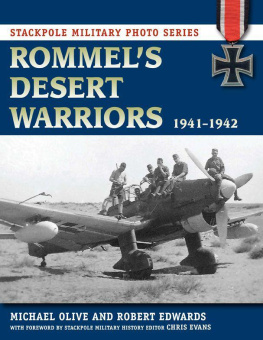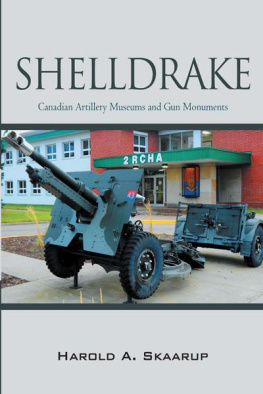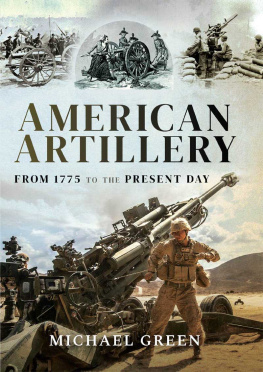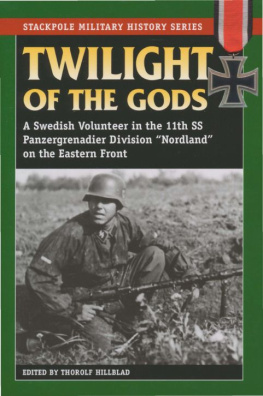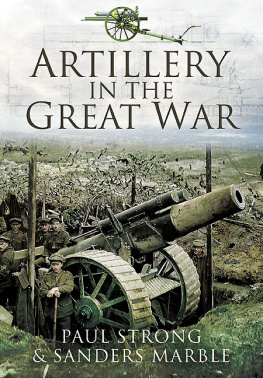ACKNOWLEDGMENTS
T he following people deserve credit for their generous assistance in supplying period photographs taken by the combatants themselves, along with modern color images of uniforms, equipment, and weapons. In each and every case, they went above and beyond to help bring this book to life by offering their expertise and time: Pat Cassidy, Steve Cassidy, P. Whammond and Carey of Collectors Guild (www.germanmilitaria.com), Wilson History and Research Center (www.militaryheadgear.com), Jim Haley, David A. Jones, Jim Pool, Scott Pritchett, Phil Francis, Paul Wills, and Aleks and Dmitri of Espenlaub Militaria (www.aboutww2militaria.com and www.warrelics.eu/forum), as well as the National Archives, the Swedish Army Museum, and a few individuals who wish to remain anonymous.

APPENDIX

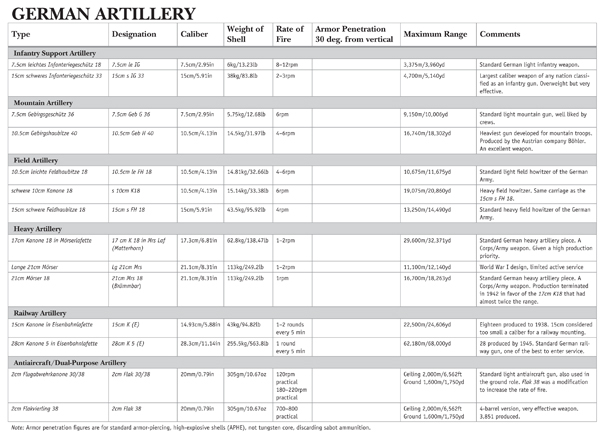
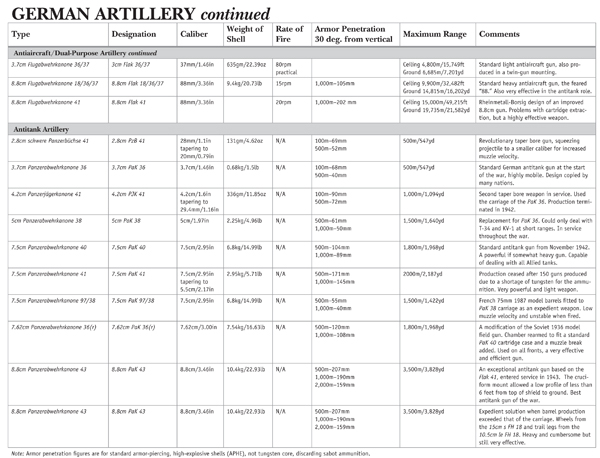
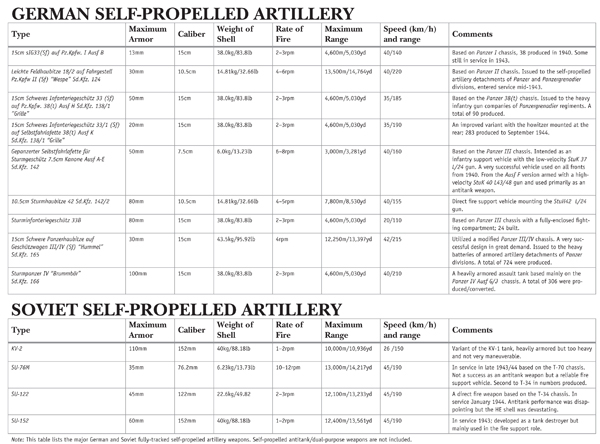


BIBLIOGRAPHY
Adamczyk, Werner. Feuer! An Artillerymans Life on the Eastern Front. Wilmington, NC: Broadfoot, 1992.
Angolia, John R., and Adolf Schlicht. Uniforms and Traditions of the German Army, 19331945. Vol. 13. San Jose, CA: R. J. Bender, 1992.
Bernard, Georges, and Francois de Lannoy. Les Divisions de LArmee de Terre allemande Heer 19391945. Bayeux, France: Editions Heimdal, 1997.
Bidermann, Gottlob Herbert. In Deadly Combat: A German Soldiers Memoir of the Eastern Front. Lawrence, KS: University Press of Kansas, 2000.
Buchner, Alex. The German Infantry Handbook, 19391945. Atglen, PA: Schiffer, 1991.
Carell, Paul. Hitlers War on Russia: The Story of the German Defeat in the East. London: Harrap, 1964.
Chamberlain, Peter, and Hilary Doyle. Encyclopedia of German Tanks of World War. Revised Edition. London: Arms and Armour Press, 1975.
DiNardo, R. L. Mechanized Juggernaut or Military Anachronism? Westport, CT: Greenwood Publishing, 1991.
Ellis, Chris, ed. Directory of Wheeled Vehicles of the Wehrmacht. London: Ducimus Books, 1974.
Ericson, John. The Road to Stalingrad. New York: Harper & Row, 1975.
Fritz, Stephen G. Frontsoldaten. Lexington, KY: University Press of Kentucky, 1995.
Gander, Terry, and Peter Chamberlain. Small Arms, Artillery and Special Weapons of the Third Reich. London: Macdonald and Janes, 1978.
Guderian, Heinz. Panzer Leader. London: M. Joseph, 1970.
Hogg, Ian V. German Artillery of World War Two. London: Arms and Armour, 1977.
Kershaw, Robert J. War without Garlands: Operation Barbarossa, 19411942. Shepperton, England: Ian Allan, 2000.
Knappe, Siegfried, and Ted Brusaw. Soldat: Reflections of a German Soldier, 19361949. New York: Orion Books, 1992.
Le Tissier, Tony. The Battle of Berlin 1945. New York: St. Martins Press, 1988.
Lucas, James. War on the Eastern Front, 19411945: The German Soldier in Russia. London: Janes, 1979.
Luck, Hans von. Panzer Commander. New York: Praeger, 1989.
Metelmann, Henry. Through Hell for Hitler. Havertown, PA: Casemate, 2001.
Porter, David. Order of Battle: The Red Army in WWII. London: Amber Books, 2009.
The Research Institute for Military History. Germany and the Second World War. Vol. IV: The Attack on the Soviet Union. Oxford, England: Clarendon Press, 1998.
Seaton, Albert. The Russo-German War: 194145. Novato, CA: Presidio Press, 1990.
Smith J. R., and Anthony Kay. German Aircraft of the Second World War. London: Putnam, 1972.
Stahlberg, Alexander. Bounden Duty: The Memoirs of a German Officer: 193245. London: Brasseys, 1990.
Tsouras, Peter G., ed. Fighting in Hell: The German Ordeal on the Eastern Front. London: Greenhill, 1995.
. Panzers on the Eastern Front: General Erhard Raus and His Panzer Divisions in Russia, 19411945. London: Greenhill, 2002.
U.S . War Department. Handbook on German Military Forces. Baton Rouge, LA: Louisiana State University Press, 1990.
Wray, Maj. Timothy A. Standing Fast: German Defensive Doctrine on the Russian Front During World War II Prewar to March 1943. Kansas: Combat Studies Institute, 1986.
Zaloga, Steven J., and James Grandsen. Soviet Tanks and Combat Vehicles of World War Two. London: Arms and Armour Press, 1984.
. The Eastern Front Armor Camouflage and Markings, 1941 to 1945. London: Arms and Armour Press, 1989.
Ziemke, Earl F., and Magna E. Bauer. Moscow to Stalingrad. New York: Military Heritage Press, 1988.


The standard light field howitzer of the German Army was the 10.5cm leichte Feldhaubitze 18, designed by Rheinmetall in 192930 and introduced into service in 1935. Reliable and sturdy, it remained in service throughout the war.
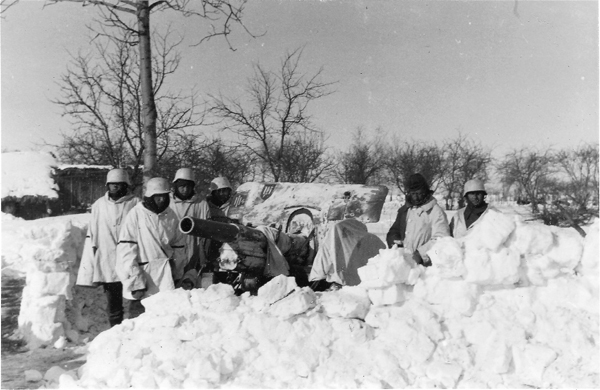
Photo 1 of 2: A pair of whitewashed 10.5cm le FH 16 guns. Though relics of World War I, their performance was adequate and, more to the point, necessary to equip units lacking artillery.

Photo 2 of 2: A pair of whitewashed 10.5cm le FH 16 guns. Though relics of World War I, their performance was adequate and, more to the point, necessary to equip units lacking artillery.
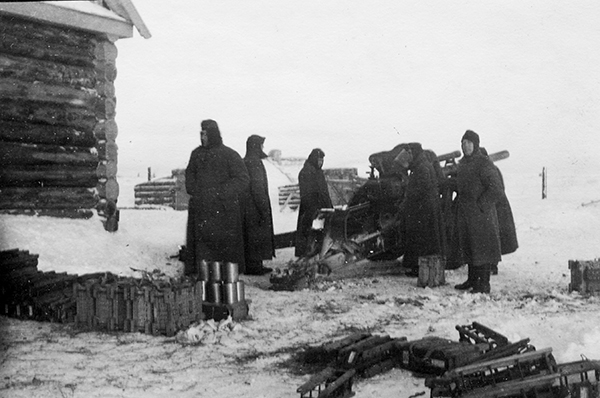
The le FH 18 fired a standard high-explosive shell weighing 14.8 kilograms (32.7 pounds) to a maximum range, with charge number 6, of 10,675 meters (11,675 yards). The ammunition is in two pieces: the shell itself and the cased charge. It was common for artillery batteries to set up near buildings for both cover and shelter, especially during the brutal winter months.

A hastily constructed field position for the
Next page
